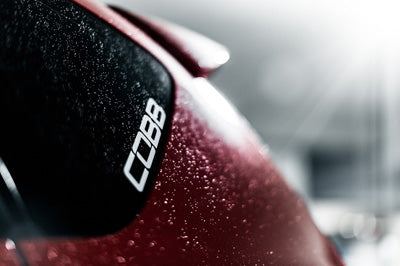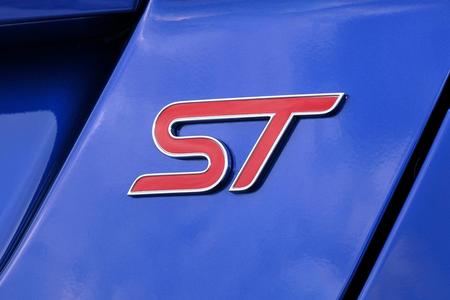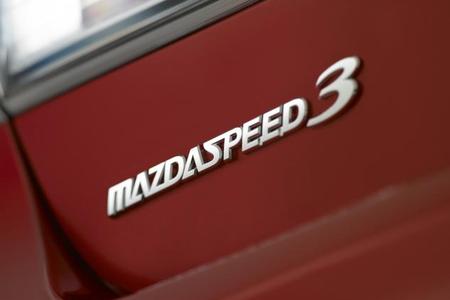***Mazdaspeed customers: Please perform the following vehicle-specific checks, BEFORE purchasing a tune***
1) Verify fuel trims are stable - To do this, monitor STFT on your AccessPORT. After 100 miles of driving on any map (including Cobb OTS), STFT should indicate 0%, or very close to it. Within +/-1% is acceptable. If you are seeing higher than a 1% correction, this indicates a leak or malfunction in the charge/intake system, and this should be addressed before beginning your tune.
2) Verify your boost control system is operating as it should - The Mazdaspeed DISI engine comes equipped with a 15.6 psi actuator. Typically, if there is a malfunction with the EBCS (Electronic Boost Control Solenoid) or other related parts, you may only see this value as your peak boost pressure. This indicates a malfunction in the system, and should also be addressed before beginning your tune.
3) Verify proper fuel pressure - Fuel pressure is essential for making power on the Mazdaspeed DISI engine. If your HPFP (High Pressure Fuel Pump) is not up to the task, this will certainly need to be address before beginning your tune. Normal pressure at idle (after fully warmed up) is 420-430 psi and at WOT should be above 1600 psi.
Note: There are situations where the above checks cannot be performed. For example, if you are running a intake that is larger than stock. The engine will not run properly on a tune set up for the OEM size maf. Therrefore, a tune will need to be provided before these checks can be done. In these instances, please follow the Standard Pre-Tune Checklist below.
Before beginning your tune, it is very important (on any vehicle) to verify that your engine is mechanically ready. Attempting to tune a vehicle with even a minor boost leak, will not only put your engine at risk, but can greatly increase the amount of time the tune process can take. It is highly recommended that you go through the below checklist, to make sure your car is 100% ready to make power
Standard Pre-tune Checklist
Before beginning your tune, it is very important (on any vehicle) to verify that your engine is mechanically ready. Attempting to tune a vehicle with even a minor boost leak, will not only put your engine at risk, but can greatly increase the amount of time the tune process can take. It is highly recommended that you go through the below checklist, to make sure your car is 100% ready to make power.
- Change oil/check oil level
- Clean mass airflow sensor (Mazda specific)
- Clean air filter Replace spark plugs (if over 20,000 miles on current plugs) Gap spark plugs to .028
- Check for any loose clamps/couplers
- Shake intake/intercooler pipes to check for noise (as this can cause false knock)
- Check tire pressure
- Check brakes for proper operation

Datalogging How-to (Ford)
Only WOT datalogs need to be performed on Ford vehicles. Due to the Speed Density based ECU logic, the ECU has the ability to automatically adjust for a variety of intakes and intercoolers on the market.
WOT logs should be performed in 4th gear, after the vehicle is fully warmed up. Drive the car in 4th gear at around 2,500 RPM, and press the center button to begin recording. Press the accelerator pedal all the way to the floor and rev the engine up to 6,500 RPM. You can then let off and end the log by pressing the center button. It is very important that you start your WOT pull at 2,500 RPM and end your pull at 6,500 RPM.
As always, be safe and courteous to those around you. Try to avoid any traffic, if possible. I also want to mention, the flatter and straighter the road these logs are performed on, can greatly improve the results of your custom tune. Consistency is very important during the e-tune process.
Datalogging How-to (Mazda)

There are 3 different types of datalogs that will need to be performed during the tuning process. The first 2 are idle and maf calibration datalogs, and then we move to wide open throttle (or WOT) datalogs. The idle and maf calibration datalogs are done to dial in your mass airflow sensor calibration to your particular intake and fine tune your Air/Fuel Ratio (AFR) to meet commanded targets. Once those are dialed in, WOT logs will be performed to maximize performance. Please log all the "default" parameters on your Accessport.
The idle log should be performed after the vehicle has AT LEAST 100 miles of city driving. Warm the vehicle up to normal operating temperature (~180*), and make sure the heat/ac are turned off. Press the center button on the AP to start logging. Wait 10 seconds and press the center button again to stop logging.
The maf cal log should also be performed after the vehicle has AT LEAST 100 miles of city driving. Warm the vehicle up to normal operating temperature (~180*), and make sure the heat/ac are turned off. Drive the car in second gear and let off the throttle until the car is almost to a complete stop. Press the center button on the AP and very slowly press the accelerator pedal increasing RPM’s up to 6,000. Do this very slowly and do not build any boost during this datalog. Once you reach 6,000 RPM, you can let off and press the center button to end the datalog.
WOT logs should be performed in 4th gear, after the vehicle is fully warmed up. Drive the car in 4th gear at around 2,500 RPM, and press the center button to begin recording. Press the accelerator pedal all the way to the floor and rev the engine up to 6,500 RPM. You can then let off and end the log by pressing the center button. It is very important that you start your WOT pull at 2,500 RPM and end your pull at 6,500 RPM.
As always, be safe and courteous to those around you. Try to avoid any traffic, if possible. I also want to mention, the flatter and straighter the road these logs are performed on, can greatly improve the results of your custom tune. Consistency is very important during the e-tune process.




